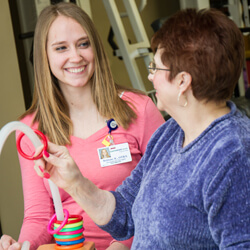Urinary incontinence: Yes, there is PT for that

When people ask what I do for a living, I tell them that I am a physical therapist and that I do the therapy that no one knows exists.
“What is this physical therapy?” you may ask. Well, let me tell you. Women’s health physical therapy encompasses the treatment of people with specific conditions that are more common in women but also occur in men. These conditions include:
- urinary incontinence (leaking urine)
- constipation
- painful sex
- pain during pregnancy and the postpartum period
- lymphedema (swelling in the body)
- osteoporosis
- scoliosis
- and more
Many of these issues aren’t discussed — either because it isn’t considered polite to talk about them or because people are embarrassed to ask their provider. The important thing to know is that there is treatment available that doesn’t involve medication or surgery.
Let’s focus on one of the most common issues that I listed above.
Urinary incontinence
Urinary incontinence (leaking urine) is a problem for more than 25 percent of women and many men.
There are three main types of urinary incontinence:
- Stress urinary incontinence means that the bladder leaks urine with forceful activities such as jumping on a trampoline, lifting a heavy weight, coughing or laughing.
- Urge urinary incontinence means that the bladder leaks urine when a person has a very strong urge to void and can’t make it to the bathroom in time.
- Mixed urinary incontinence means that there are features of both stress and urge urinary incontinence.
Urinary incontinence may be due to pregnancy (for women), prostatectomy (for men) or no reason at all. In fact, many women report having urinary incontinence as early as age 15.
Treatment starts with a pelvic floor muscle examination in which the physical therapist examines the muscles that are responsible for holding back the urine (and the skeleton and nerves connected to the muscles) to see if they are weak, tight or uncoordinated.
If one or more of these issues is seen, then the physical therapist will recommend specific exercises to address each issue. Many people are familiar with the term “Kegels,” which is one kind of exercise for the pelvic floor muscles. But most don’t know that there are different kinds of exercises to address the different pelvic floor muscle issues. That is where physical therapists can really help.
If you are having trouble with urinary incontinence or any of the other issues I listed above, you may benefit from working with a physical therapist. Ask your health care provider for a referral.